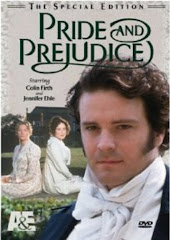All of Erdrich’s fiction offers believable portraits of strong, capable, and interesting women. This is probably as reflective of the pronounced matriarchal tradition in Chippewa tribal life as it is of the role models that Erdrich has credited among her relatives and friends. Of all of her female portraits, Fleur, Pauline, and Margaret Kashpaw (Rushes Bear, a name she earns from a confrontation in this novel) are among the most memorable. In Tracks, there is no female bonding such as that seen in The Beet Queen: Each of these women is bound into her own psyche and her own world. Their coming together in the novel results from need rather than from any genuine liking. None of them, however, is reducible to the kind of stereotype—love object, goddess, mother figure—so prevalent in (mostly male-authored) earlier portraits of women.
Margaret, who is in the process of assimilation, is a churchgoing Catholic whose family name (“cash-paw”) implies a turning away from the woods and toward the white man’s road. Her sons are divided: Eli prefers the woods and the old ways, as is seen in both Love Medicine and The Beet Queen; Nector represents the future of the tribe, as is especially apparent in Love Medicine but also here in his selfish use of Nanapush and Fleur’s allotment money to pay the fine on Kashpaw land. Margaret's late-blooming love affair with Nanapush is damaged (although not permanently) by her acquiescence in this act, and she—along with Nanapush—redeems Lulu from the government school and rears her. She is a strong representative of matriarchy in the book.
Pauline represents the most evil presence in the series, here in her role as provacateuse and prevaricator, and in The Beet Queen and Love Medicine as the disturbed (and disturbing) hater disguised in a nun’s robe. She seems to be an objective correlative of the baneful influence of the Catholic church on the Chippewa, and, as a half-breed, she is vulnerable to the lure of whiteness (her own is revealed to her in a vision). Yet even here Erdrich tends to resist stereotype: Pauline’s consciousness of her own unattractiveness is a strong impetus to her bizarre actions and ultimate madness, and a reminder of the premium that was placed on beauty in earlier literature and the price that women must pay for it in social terms.
Fleur’s portrait is Erdrich’s masterpiece. In her gallery of remarkable females, no other is so enigmatically attractive. Fleur’s passion, independence, and endurance win the reader’s heart. Her brief appearances in both The Beet Queen and The Bingo Palace indicate the extent of her influence in the whole series. In all Western literature there are very few women like Fleur: To use the term “Earth Mother” of her is to suggest one of her dimensions but not to encompass her totality. Fleur indicates Erdrich’s ability to penetrate through previous female characterizations and to find for modern women a role model that is significant not only for Native Americans but also for all women who read to discover themselves in the imaginations of gifted writers.
Monday, June 15, 2009
Subscribe to:
Post Comments (Atom)





No comments:
Post a Comment
Note: Only a member of this blog may post a comment.